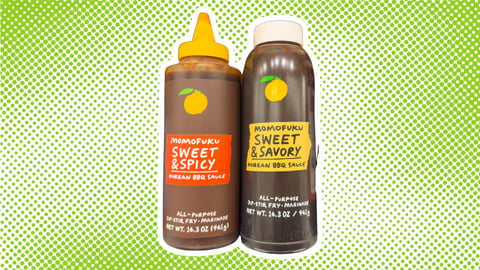Keurig Dr Pepper To Pilot Compostable Paper Bottle
Keurig Dr Pepper is developing a recyclable and compostable paper bottle that it will test in the United States.
The No. 56 consumer goods company is teaming with Cologne, German-based packaging manufacturer PAPACKS for a bottle that uses fiber and organic materials, rather than the plant-based PET plastic or sustainably sourced pulp with polymer lining that’s found in some other paper-based packaging.
The ultimate goal is for the bottle, label, cap, and closure to be compostable or able to be recycled with other paper products in the majority of U.S. communities, supporting Keurig Dr Pepper’s commitment to reduce its use of virgin plastic by 20% by 2025.
The prototype of the new bottle is expected later in 2022, and KDP will pilot the packaging in select products, including water, juices, and carbonated beverages.
The food and beverage company, which in addition to its namesake brands includes such brands as Green Mountain, Peet’s Coffee, Bai, and Evian, also teased a few other sustainable initiatives, including the development of a home compostable K-Cup pod. It’s also said to be working to improve recyclability of multipack beverage carrier materials and increasing use of recycled content through its beverage packaging and coffee brewer portfolio.
Keurig Dr Pepper has already transitioned its Snapple brand to bottles made with 100% recycled plastic — excluding the cap — which the company estimated at the time would reduce its annual virgin plastic use by around 46.3 million pounds. The updates were part of a larger brand refresh to attract younger consumers through new graphics and sustainable packaging, and it’s an initiative that KDP chairman and CEO Bob Gamgort said in a February investors call was proving to be successful.
But as CPGs elevate their sustainability commitments to meet heightened consumer expectations and government regulations, companies are increasingly looking beyond recyclability for more environmentally friendly solutions to single-use plastics. The Coca Cola Company, for example, recently turned heads with its intention to have at least one-quarter of all its beverages sold in reusable glass, plastic, or refillable fountain containers by 2030.
[See also: 10 CGs Ranked ‘Most Sustainable' in 2022]
Many others are looking to partnerships to further progress, both as owned initiatives and part of broader coalitions. PepsiCo has developed a compostable bag for its Off The Eaten Path Frito-Lay brand, and will enable other manufacturers to license the greener packaging technology at no cost, while Target recently enlisted a host of brands for its new Target Zero sustainable initiative that includes, but isn’t limited to, packaging designed to be compostable and reusable.
However, work to educate consumers about the differences between greener packaging remains an obstacle. For example, Keurig Dr Pepper’s Snapple bottes feature the How2Recycle label, which is part of a standardized system adopted by a coalition of consumer goods companies that includes Anheuser-Busch, Mars, Welch’s, Land O’ Lakes and others.
[See also: Mentos’ Paperboard Bottles]
But when efforts extend beyond recycling, things get a little murkier. A study conducted by the Bio-Based and Biodegradable Industries Association (BBIA) found while recyclable logos were correctly identified by 90% of respondents, just 10% recognized compostable labels. And while the majority of respondents understood what “compostable” means, half were unsure what compostable packaging disposal entails.
What’s more, very few of the respondents, which surveyed British consumers, understood the concept of plant-based packaging.




